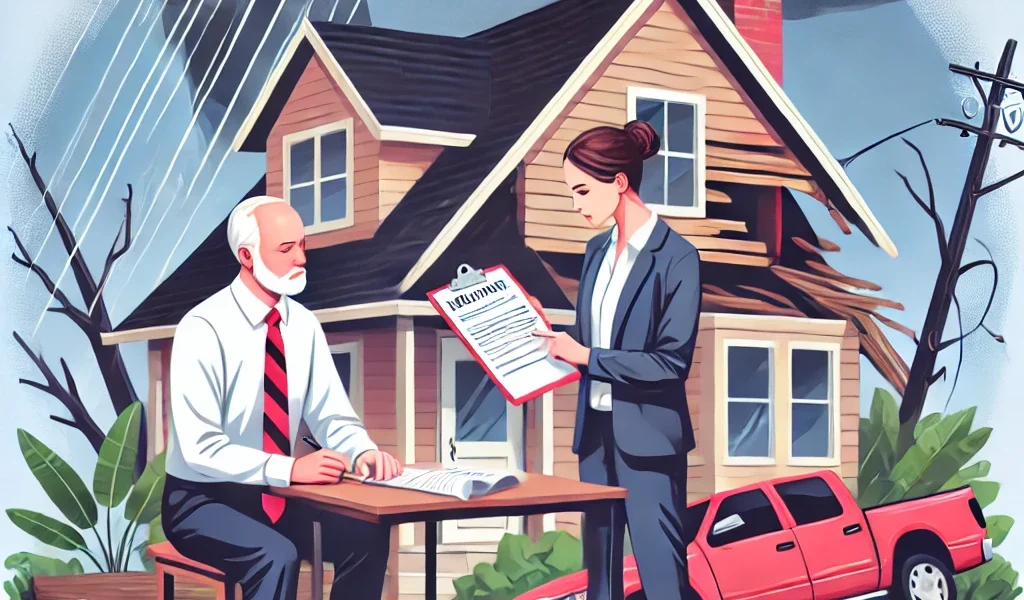Natural disasters can strike unexpectedly, causing significant damage to homes, businesses, and personal property. When disaster strikes, having the right insurance policy in place can make all the difference in financial recovery. However, navigating the insurance claims process can be challenging, especially during such stressful times. This guide will help you understand how to file a successful insurance claim after a natural disaster while avoiding common pitfalls.
Understanding Natural Disaster Insurance Coverage
Most standard homeowners, renters, and business insurance policies cover certain types of natural disasters, but there are exceptions. Here’s a breakdown of common coverage types:
- Homeowners Insurance: Typically covers windstorms, hail, fire, and lightning but often excludes floods and earthquakes.
- Flood Insurance: Usually requires a separate policy through the National Flood Insurance Program (NFIP) or private insurers.
- Earthquake Insurance: Often excluded from standard policies and must be purchased separately.
- Business Interruption Insurance: Covers lost income due to property damage from covered disasters.
- Auto Insurance: Comprehensive coverage protects against flood, hail, and other weather-related damage.
Step-by-Step Guide to Filing an Insurance Claim After a Natural Disaster
Step 1: Ensure Safety First
Before assessing property damage, make sure it is safe to do so. Follow emergency protocols, evacuate if necessary, and return only when authorities declare it safe.
Step 2: Review Your Insurance Policy
Carefully read your insurance policy to understand:
- What is covered and what is excluded
- Deductibles and policy limits
- Claim filing deadlines
- Required documentation
Step 3: Document the Damage
- Take clear photos and videos of all affected areas.
- Make a detailed inventory of damaged or lost items, including their estimated value and purchase receipts if available.
- Keep a record of all repair estimates and temporary fixes.
Step 4: Notify Your Insurance Company
- Contact your insurer as soon as possible to report the damage.
- Provide initial details and follow their instructions for filing the claim.
- Request an adjuster visit to assess the damage.
Step 5: Mitigate Further Damage
- Take reasonable steps to prevent additional damage, such as covering broken windows or leaks.
- Keep receipts for temporary repairs, as they may be reimbursable.
Step 6: Work with the Insurance Adjuster
- Be present during the adjuster’s visit to point out damages.
- Provide your documentation, including photos, receipts, and a damage inventory.
- Request a detailed written estimate of repairs.
Step 7: Review the Settlement Offer
- Compare the insurer’s offer with repair estimates from independent contractors.
- If the offer seems low, negotiate with the insurer or hire a public adjuster.
- Review the claim payout details, including deductions for depreciation and policy limits.
Step 8: Appeal if Necessary
If your claim is denied or the settlement is insufficient, you can:
- Request a detailed explanation from your insurer.
- Provide additional documentation or expert opinions.
- File an appeal with your insurance company.
- Seek legal assistance if the dispute remains unresolved.
Common Mistakes to Avoid When Filing a Claim
1. Delaying the Claim Process
- Most policies have strict deadlines for reporting claims.
- File your claim as soon as possible to avoid complications.
2. Failing to Document Damage Properly
- Insufficient documentation can lead to claim denial or reduced payout.
- Take extensive photos and videos before cleanup begins.
3. Discarding Damaged Items Prematurely
- Keep damaged items until the adjuster has assessed them.
- If removal is necessary, take photos as proof of loss.
4. Not Reading Your Policy Terms
- Many homeowners assume they have coverage for all disasters.
- Understanding your policy can prevent unpleasant surprises.
5. Accepting a Low Initial Settlement
- Insurance companies may offer a lower settlement than what is needed.
- Get independent repair estimates and negotiate if needed.
Pro Tips for a Hassle-Free Insurance Claim
- Keep digital copies of insurance policies, receipts, and important documents.
- Maintain an emergency fund to cover immediate repair costs while waiting for a claim payout.
- Consider working with a public adjuster if you have a large claim and need assistance with negotiations.
- Stay informed about disaster relief programs that may supplement insurance coverage.
Final Thoughts
Filing an insurance claim after a natural disaster doesn’t have to be overwhelming. By understanding your policy, documenting damage thoroughly, and following the correct steps, you can maximize your claim and recover faster. Always communicate clearly with your insurer and don’t hesitate to seek professional assistance if needed. Being proactive and well-prepared can make all the difference in securing the financial support you need during difficult times.




